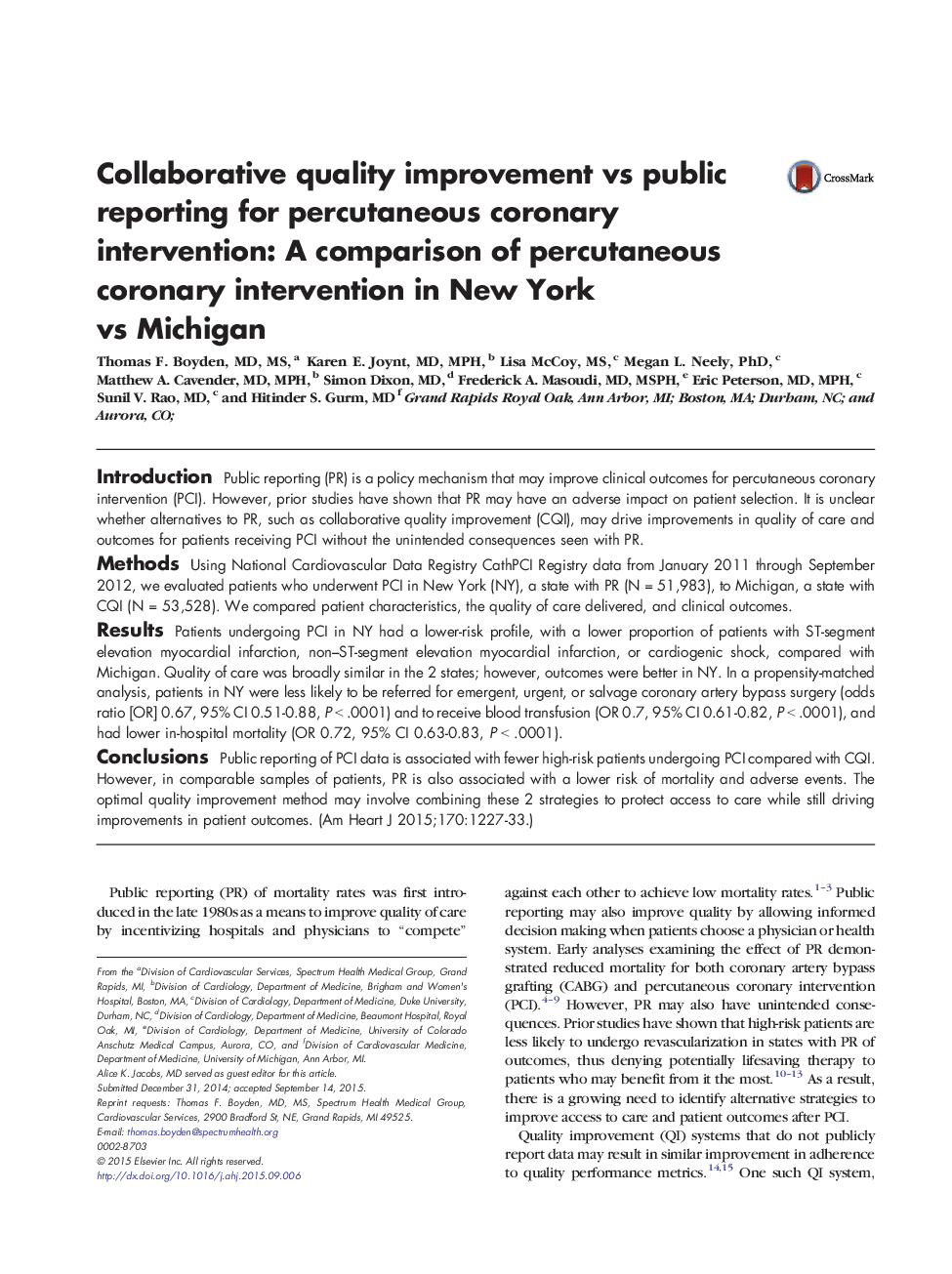| کد مقاله | کد نشریه | سال انتشار | مقاله انگلیسی | نسخه تمام متن |
|---|---|---|---|---|
| 2849725 | 1571444 | 2015 | 7 صفحه PDF | دانلود رایگان |
IntroductionPublic reporting (PR) is a policy mechanism that may improve clinical outcomes for percutaneous coronary intervention (PCI). However, prior studies have shown that PR may have an adverse impact on patient selection. It is unclear whether alternatives to PR, such as collaborative quality improvement (CQI), may drive improvements in quality of care and outcomes for patients receiving PCI without the unintended consequences seen with PR.MethodsUsing National Cardiovascular Data Registry CathPCI Registry data from January 2011 through September 2012, we evaluated patients who underwent PCI in New York (NY), a state with PR (N = 51,983), to Michigan, a state with CQI (N = 53,528). We compared patient characteristics, the quality of care delivered, and clinical outcomes.ResultsPatients undergoing PCI in NY had a lower-risk profile, with a lower proportion of patients with ST-segment elevation myocardial infarction, non–ST-segment elevation myocardial infarction, or cardiogenic shock, compared with Michigan. Quality of care was broadly similar in the 2 states; however, outcomes were better in NY. In a propensity-matched analysis, patients in NY were less likely to be referred for emergent, urgent, or salvage coronary artery bypass surgery (odds ratio [OR] 0.67, 95% CI 0.51-0.88, P < .0001) and to receive blood transfusion (OR 0.7, 95% CI 0.61-0.82, P < .0001), and had lower in-hospital mortality (OR 0.72, 95% CI 0.63-0.83, P < .0001).ConclusionsPublic reporting of PCI data is associated with fewer high-risk patients undergoing PCI compared with CQI. However, in comparable samples of patients, PR is also associated with a lower risk of mortality and adverse events. The optimal quality improvement method may involve combining these 2 strategies to protect access to care while still driving improvements in patient outcomes.
Journal: American Heart Journal - Volume 170, Issue 6, December 2015, Pages 1227–1233
